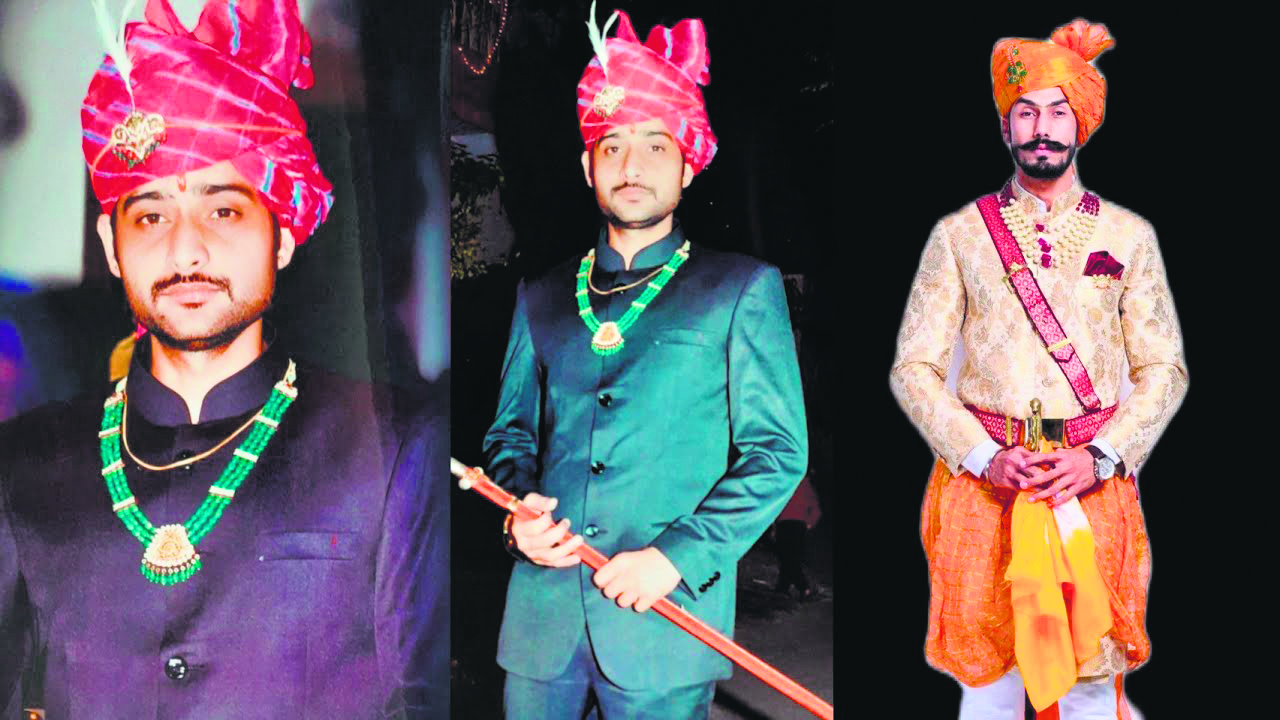Chain-stitch embroidery from Kutch in Gujarat has been prized for centuries as one of India’s finest textile types. Worked in dense chain stitch in lustrous twisted silk thread, it has lent itself to all types of design from the floral arabesques of the Mughal period and the hybrid chinoiserie of the western export market to the stylised flowers, parrots and female figures found in the colourful garments and hangings made for local patrons in the 19th century. This type of embroidery is traditionally associated with the Mochi or shoe-maker community of Kutch. The origins of the Mochis’ craft lie outside Gujarat and outside the borders of modern-day India. Some members of the Mochi community believe that their ancestors came from Sindh, today in Pakistan, in the 14th century, settling in Halvad, in Surendranagar District in Gujarat, midway between Bhuj and Ahmedabad before migrating to Kutch. They learnt the art of embroidering in silk thread on leather in Sindh. Other sources state that the Mochis are originally from Gujarat and that the art of embroidering on leather was taught to them in Gujarat by a Sindhi. Yet another version tells of Kutchi embroiderers secretly learning the art by spying on visiting Sindhi craftsmen only in the 18th century. In all of these scenarios, the origins of the craft in Sindh are undisputed.

Embroidered Bed-cover

Embroidered Palampore




The region had been renowned for its embroidered leather sleeping mats at least since the 13th century, when Marco Polo had admired them. These embroidered mats, as well as other leather items, such as hawking gloves, continued to be made until the 19th century. An adapted cobbler’s awl (aari), with its thick wooden handle originally intended to help the user push the hooked metal embroidery spike through leather, continued to be used for embroidery on cloth in Sindh at least until the end of the 19th century, as illustrated in an article by B.A. Gupte in the Journal of Indian Art and Industry in 1888. Travellers such as the Portuguese Duarte Barbosa in 1518 and the Dutch Jan Huyghen van Linschoten in 1585 admired the fine embroideries of Gujarat, especially Cambay, where the embroiderers had at some stage started embroidering on cloth as well as leather. Soon after the foundation of the East India Company in 1600, the English trading company was asking for ‘quilts made about Cambay’ to be sent, and by 1641 they start to appear in the Company’s London auctions. Gujarati embroideries continued to be popular with British buyers into the 18th century; Alexander Hamilton’s travel journal ‘A New Account of the East Indies’ published in 1725 states that ‘[the people of Cambay] embroider the best of any people in India, and perhaps in the world.’ While no examples of chain-stitch embroidery remain from as early as the 16th century, some superb pieces made in the 17th and 18th centuries both for the Mughal court and for export to the West do survive, and these are testament to the astonishing skill and adaptability of the embroiderers of the time. It has long been assumed that the fine chain stitch embroideries made for the Mughal court in the 17th century, and for export to Europe in the late 17th and 18th centuries were made by Mochi embroiderers working to commission. But a technical examination of these embroideries reveals some surprising information. While the 19th- and 20th-century examples for the domestic market appear to have been embroidered using the distinctive hooked awl (aari) after which this type of embroidery is often named (aari bharat), the earlier Mughal and export pieces from the 17th and 18th centuries have all been embroidered u s i n g a straight needle. This only becomes clear when the reverse of the embroidery is examined: the stitches made with the aari are all interlinked in one continuous chain with no gaps between the stitches, while those done with a needle are seen as individual stitches, often at haphazard angles and with tiny gaps between them. This seems anomalous given the traditional history of Mochi embroidery, in which the use of the hooked awl is central to the story of the transition from leather-working to embroidery on cloth. It might well be the case that the earlier pieces were made by embroiderers working in royal karkhanas or Company workshops who were emulating the effect of the Mochis’ chainstitch embroidery but we r e n o t themselves of that community. They would therefore not be familiar with the hooked aari and would work instead with a straight needle. The garments and hangings made by Mochi embroiderers for Kutchi patrons working with the hooked aari show a level of skill equal to that of the earlier courtly and export pieces. The flamboyant dado panels in the Aina Mahal in Bhuj and the glorious floral tent from the royal family of Dhrangadhra are masterpieces of the later period of Mochi embroidery, along with other virtuoso pieces such as the animal cover (jhool) and pichhwai in the TAPI collection. The superbly embroidered dado panels on the walls of the Aina Mahal in the royal palace at Bhuj, built around 1750, are certainly the product of local Mochi embroiderers. Their designs are an amalgam of Mughal-style tent panels (qanat), with flowering trees shown beneath a cusped arch, separated and bordered by floral meander patterns and embroideries made for export to Europe for use as wall- and bedhangings, which frequently show an exotic flowering tree rising from a rocky mound. The larger, squarer panels are in a more Mughal style, while the dado panels of narrower joined niches are closer to an adapted export style. Both decorative types would have already been familiar to the Mochi embroiderers. The British historian L.F. Rushbrook Williams evidently saw them in the first half of the 20th century as he describes the Hira Mahal as ‘panelled high’ with ‘exquisite Kutchi silk embroidery.’ The panels were covered in plastic and installed as a permanent part of the Aina Mahal display when the building was converted into a museum trust in about 1971. Prior to that, they were displayed and brought out only on special days (e.g. three days of Diwali) when members of the royal family performed a puja of the ‘dholiya’ (Maharao Lakhpatji’s bed) in Hira Mahal.













